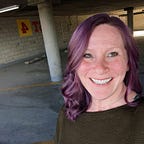Learning Design Inside the Classroom
Design almost always happens “before”, and sometimes we get some feedback “after”. But what about “during”?
At a recent Learning Experience Design workshop I participated in a discussion around the idea that, as LXDs, we do most of our design work before and after the actual learning experience. Rarely do we go in and see what we can learn during the learning experience itself!
I became interested in what we could learn if only we had the chance to see our designs in action. As part of our learner centered design process, we continually test activities and learning material with students, but it can be difficult to replicate the exact classroom conditions.
At the beginning of 2021, WGU Labs partnered with BHLI to create Be The Change: Careers in Health, a high school level course aimed at increasing diversity in healthcare leadership by educating students of color about healthcare careers. You can learn more about this project from a previous blog here. This discussion prompted me to ask the Bluford Healthcare Leadership Institute (BHLI) for permission to observe the classroom where they are piloting the Be The Change course.
Background
The pilot, held during the Fall 2021 term, is a collaborative partnership between BHLI, the University of Missouri — Kansas City (UMKC), and two Kansas City charter schools (University Academy and Marion Ewing Kauffman School). UMKC hosts Be The Change as a university course, and the course is attended by students from the two charter schools. Classes are held in a hybrid setting two days a week, on Tuesdays and Thursdays.
- On Tuesdays, students from Kauffman School are transported to University Academy. All students are present in the same classroom (AND over Zoom) for a presentation by that week’s Subject Matter Expert.
- On Thursdays, students attend class remotely from their own campus (or over Zoom). They use this time to complete their assigned activities. On the day of the observation, students were presented the details of a legal case then asked to debate and agree on the appropriate ruling.
I was able to join both class sessions, one on each campus. This allowed me to see more of our curriculum in action, and allowed me to gain a better understanding of the challenges of a hybrid setting within the classroom. I was also able to see how students of differing class sizes engaged with the material.
Lessons Learned
Seeing students interact with the speakers and with the material provided valuable learning for our team. Some of these lessons were reminders of things we already know. Some were new perspectives, and others offered insight into design or research strategies we can incorporate in future projects. Here’s some highlights:
Consider the learning environment
Try to dig deeper into how students might behave in the moment by asking questions which place the student in the proposed learning environment. One way to do this might be to ask the student how they behaved in a similar situation previously. Some examples include:
- “Have you heard a guest speaker present in your classroom in the past?”
- “What are some questions you have asked?”
- “Do you prefer to ask questions live in the classroom, or if attending over video, do you prefer to use the chat function?”
Provide the Facilitator with more tools for moderating discussions
Help the facilitator keep the discussion on track by providing ideas to help direct the conversation. Examples might include:
- Suggestions to prompt students to look at the problem from different perspectives (“What if you were the CEO?” “What if you were the parent?”)
- Suggestions to prompt students about other opportunities or constraints which may affect their decision (“What kind of liability does the hospital/medical staff have?”)
- Reminders to share to keep students on task (“Remember to think critically and separate the issue from emotions.”)
Provide Context but Let Students Drive the Solutions
Offer as much detail as possible, then allow students the freedom to think through possible solutions. In this activity, four possible solutions were offered, but students wanted a deeper understanding of the case so they could create their own solutions. In this case, it may have been helpful to have primed students about applicable laws, or processes which a judge might have completed to gather as much information about the case as possible.
Emphasize the Value of Reflection.
It can be difficult for facilitators to follow a specific time schedule in class, and often discussion and reflection of previous topics is abandoned. Encourage facilitators to prioritize reflection and include follow up discussions.
Build Connections Between Topics
Students sought more information about the connections, similarities, and differences between similar and adjacent topics. Help students understand more about how the topic connects and interacts with previous topics.
Conclusion
By taking the time to observe our learning design in the classroom, we gained insight into not only how this course could be improved, but also found deeper context to consider when developing future courses. We are extremely grateful to the Bluford Healthcare Leadership Institution and to the individual charter schools for this rare opportunity to visit the classroom and see our learning design in action.
Icons are from Flaticon.com
